Table of Contents
![]() About the Author
About the Author
![]() Reviews and Awards
Reviews and Awards
- Video Recovery
- SD Card Recovery
- Recycle Bin Recovery
- Recover Data from USB
- Recover Deleted Emails
- Hard Drive Not Showing Up in Windows
- Recover Unsaved Word Documents
- Recover Deleted Files
- Recover Files from Virus Infected Hard Drive
- Best Free Photo Recovery Software
- Recover Files from Formatted Hard Drive
This page uncovers practical fixes for "can't access USB on Windows 10" error, helping you to open USB flash drive and restore data with ease. Follow provided methods to resolve either issue that you are having on your computer without losing any data now:
| Workable Solutions | Step-by-step Troubleshooting |
|---|---|
| Part 1. Recover USB Data First | Run EaseUS recovery software > Scan USB...Full steps |
| Part 2. Find Missing USB Drive |
1. Initialize unknown USB in disk management |
| Part 3. Fix "Can't Access USB" Error |
1. Format RAW USB to make it openable |
The provided methods also work to fix USB becomes unopenable, inaccessible, USB flash drive not showing, USB detected but not showing data, etc., errors on Windows 11/10/8/7.
Overview of Cannot Open USB Flash Drive in Windows 10/11 Issue
Usually, when you insert your USB flash drive or a pen drive, it will be quickly detected by your PC and show up in File Explorer.
But sometimes, Windows cannot recognize nor open a USB device if something goes wrong. For example, the USB drive is missing or corrupted, the flash drive is infected by a virus or damaged due to certain reasons. This issue frequently happened in Windows 8/7 and it has become increasingly severe in Windows 10.
Searching on Google, you will find a large number of users are asking for help about how to access a USB flash drive and data in Windows 10.
If you are one of the victims who can't access USB drive on Windows 10 due to USB malfunction, stay here. Follow through this tutorial page and learn how to find USB and fix "can't access USB" issue on Windows 10 without losing your vital data.
Part 1. Open Inaccessible/Unopenable USB and Restore Data
Works to: Restore data from inaccessible or inoperable USB flash drive on Windows 11/10/8/7, emergency data recovery.
When a USB flash drive becomes inaccessible, the most important thing is to open USB and restore data. The sooner you take action, the better chance you will get to bring all files back from the USB.
Here, we would like to offer a straightforward resolution for you to try. EaseUS Data Recovery Wizard enables you all to restore USB files in 3 simple steps.
No matter what causes the USB inoperable or inaccessible, you can re-insert the USB flash drive to your PC and apply this software to bring all your files out. No data recovery experience or skill is required. If your files saved in the USB drive is less than 2GB, try EaseUS Data Recovery Wizard Free. It works the same as the pro version.
Free download EaseUS data recovery software and follow the guides below to restore files.
Step 1. Run USB Data Recovery Software
Connect the USB drive or pen drive to your computer and launch EaseUS USB data recovery software on your PC. Select the drive which is labeled as a External drives, and click "Scan" to start looking for lost files.
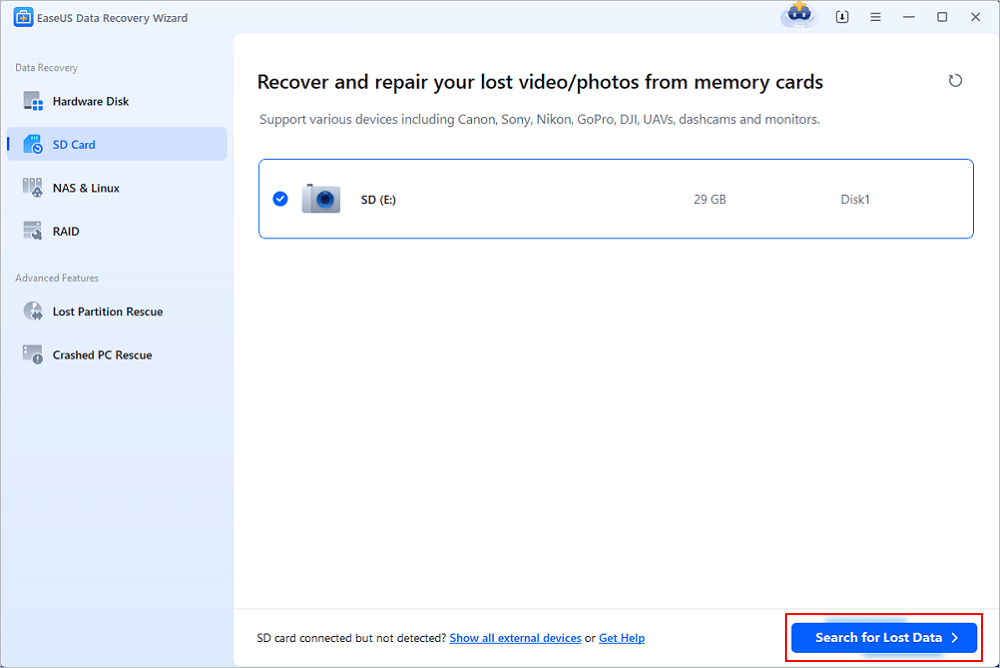
Step 2. Scan and Search Lost Files on a USB Drive
EaseUS Data Recovery Wizard will thoroughly scan your USB flash drive/pen drive and find all your lost data on it. When the scan process completes, use the Filter feature to find wanted files.
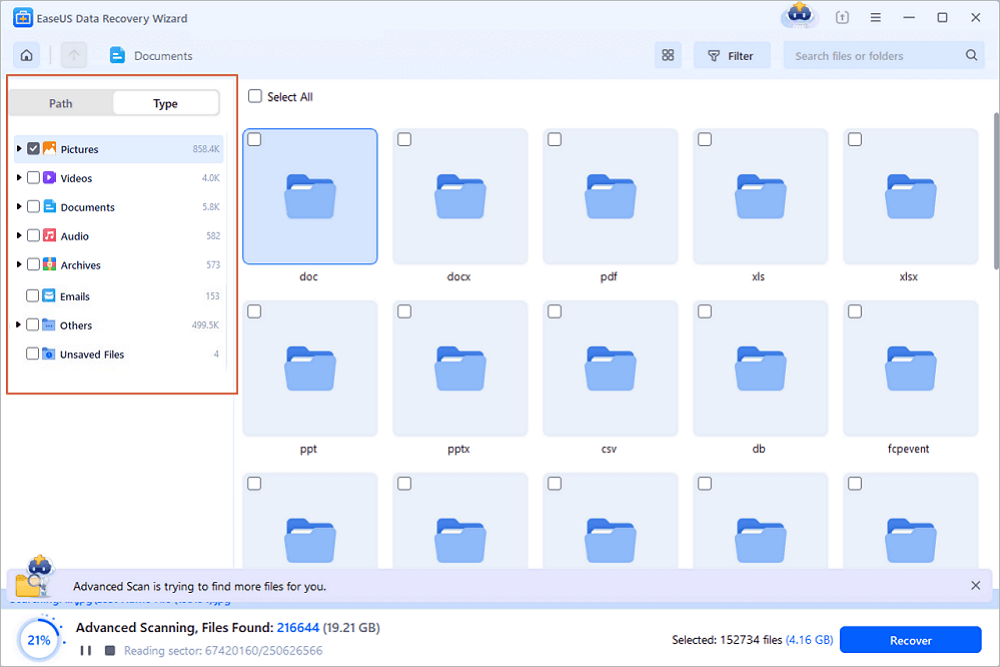
Step 3. Restore All Lost Files from USB
A double-click will allow you to preview the files. Select the target files to restore and click "Recover" to save them to a secure location on your PC or other external storage devices.
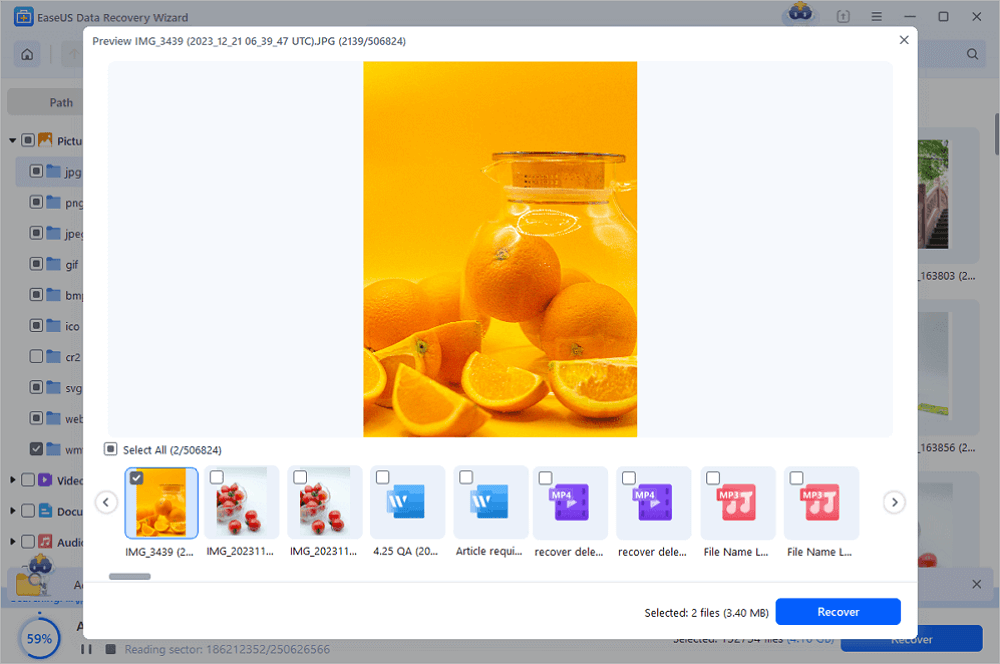
Note: Remember to save the USB data to another secure location in case of further data loss. Then you may continue reading and learn how to access and open USB with the following fixes.
Video Tutorial: Recover Files from USB Flash Drive
Part 2. Find USB on Windows 10 that Is Not Showing in File Explorer
Applies to: Help you find USB drive on Windows 10, make USB that is not showing in File Explorer detectable and accessible again.
According to some forum posts, sometimes, USB users may not be able to find their USB drive in Windows File Explorer. Mostly, when a USB doesn't show in File Explorer, you can try to reconnect the USB or switch a USB port to see if the drive shows up or not.
If the USB still doesn't display in File Explorer, you can go to Disk Management and check the USB state. According to the different states of USB displayed in Disk Management, we collected respective solutions toward each case.
Check out and find out the right solution to find your USB and make it usable again.
Case 1. USB Shows as Unknown
Symptom: USB fails to show up in File Explorer but displays as unknown in Disk Management.

Causes: USB is not initialized.
Solution: Initialize USB
Tutorial: Initialize USB and Make It Accessible
Step 1. Connect USB to your PC.
Step 2. Right-click "My Computer" or "This PC", click "Manage" to open Disk Management.
Step 3. Here, right-click the USB disk and click "Initialize Disk".
Step 4. In the dialog box, select the disk(s) to initialize and choose MBR or GPT partition style.

After this, you can open a USB flash drive on Windows 10/8/7 again.
Case 2. USB Shows as Unallocated in Disk Management
Symptom: When there is no partition on the USB flash drive, you will not be able to access it. Usually, it will display as unallocated in Disk Management.
Cause: Mistakenly deleted partition on USB, brand new USB doesn't have a partition.
Solution: Recover Data on USB First, Create New Partition on USB
Tutorial: Recover Data and Create Partition on USB
If you have data saved on the USB, revert to Part 1 and apply USB recovery software to restore all lost data first.
Step 1. Connect or insert the USB into the computer.
Step 2. Go to "This PC", right-click it, and choose "Manage" > "Disk Management".
Step 3. Right-click the unallocated space and choose "New Simple Volume".
Step 4. Follow the wizard to finish the continuous steps.
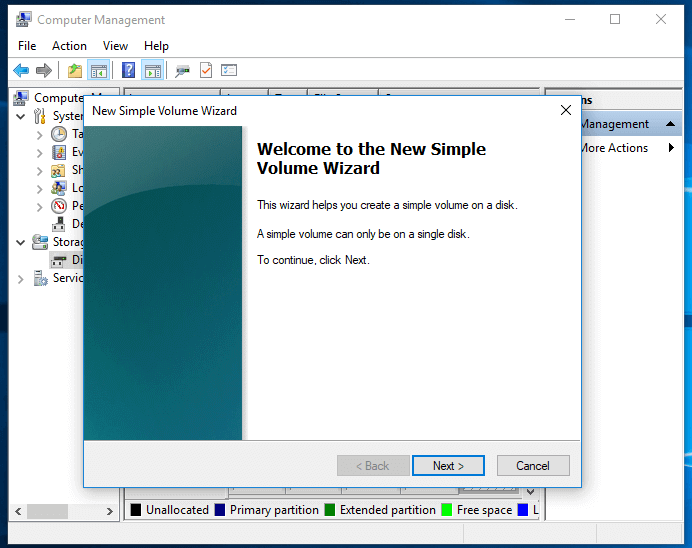
Case 3. USB Shows NO Media
Symptom: USB shows No Media in Disk Management, USB is not showing in File Explorer.

Causes: Serious logical problem, physical damage on the USB drive.
Solution: #1. Update USB driver (available in F2 in Case 3 Part 3); #2. Take USB to a local device repair center for repair.
Part 3. Fix "Can't Access USB Drive" Error in Windows 10/11
Applies to: Fix USB, SD card, external hard drive, etc., storage devices detected in Windows 10 File Explorer but not accessible error.
According to most ordinary users, when they cannot open a USB flash drive, it usually shows up in the Windows File Explorer but becomes unopenable or inaccessible.
In other words, you can see your USB displaying in the File Explorer but you can neither open the USB nor access the saved files on it. Check the following listed symptoms and if you are experiencing the same issue, go through the guidelines to open your USB.
Case 1. USB Becomes RAW, Windows Requires to Format USB
Symptom: USB file system becomes RAW, Windows warns "You need to format the disk in drive * before you can use it".

Causes: USB file system error, USB becomes not formatted, brand new USB flash drive that is not formatted.
Solution: Format RAW USB, Resetting File System to FAT32 or exFAT
How to Fix Windows 10 Won't Open USB Flash Drive by Formatting
Step 1. Press "Windows key + R" to bring up Run, and type devmgmt.msc and hit Enter.
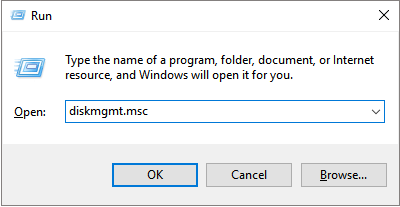
Step 2. In Disk Management, right-click the USB flash drive or pen drive and select the "Format" option.
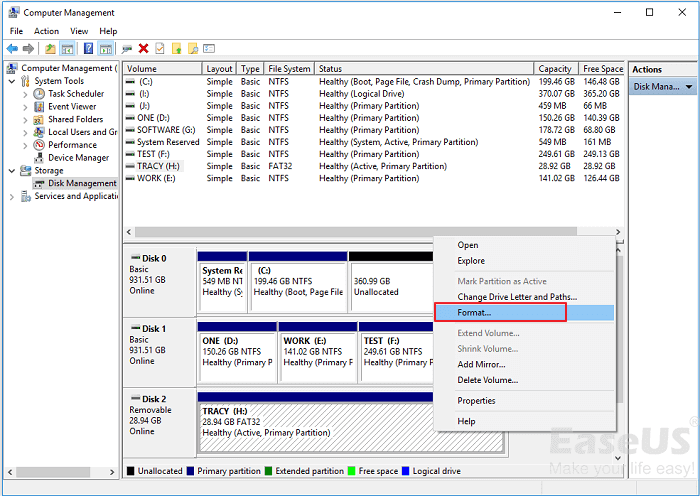
Step 3. Follow the onscreen wizard to choose a file system, such as FAT32 or exFAT to the drive. Click OK.
Note that if your USB drive is 32GB or smaller, set FAT32 as its file system. If it's 64GB or even bigger, set exFAT as its file system.
Case 2. Access Denied on USB Drive
Symptom: USB becomes unopenable, Windows warns that "Location is not available. Access is denied.".
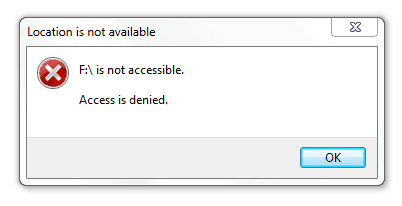
Causes: USB permission issue, USB is outdated; USB contains internal errors, etc.
Solutions: #1. Take Ownership of USB; #2. Scan Hardware Changes; #3. Run CHKDSK to Fix USB Error
Follow through each tutorial to fix USB won't open an issue and make it accessible again on Windows 10/8/7:
Fix 1. Take Ownership of USB
Step 1. Open "Windows Explorer", right-click on USB, and select "Properties".

Step 2. Go to Security and click "Advanced", go to "Owner" tab.

Step 3. If you want to change the owner to a user or group that is not listed: Click "Change" > "Other user and groups", and type the name of the user or group in "Enter the object name to select", then click "Check Names" > "OK".

Step 4. If you want to change a user or a group that is listed:
Click new owner in the "Change" box and make changes.

Step 5. If you want to change the owner of all sub-containers and objects within the tree: Select the "Replace owner on subcontainers and objects" box.

Fix 2. Scan Hardware Changes
Step 1. Go to "This PC" > "Manage" > "Device Manager".
Step 2. Find and right-click your USB drive, then choose "Scan for hardware changes".
Step 3. Check whether your disk works properly again.
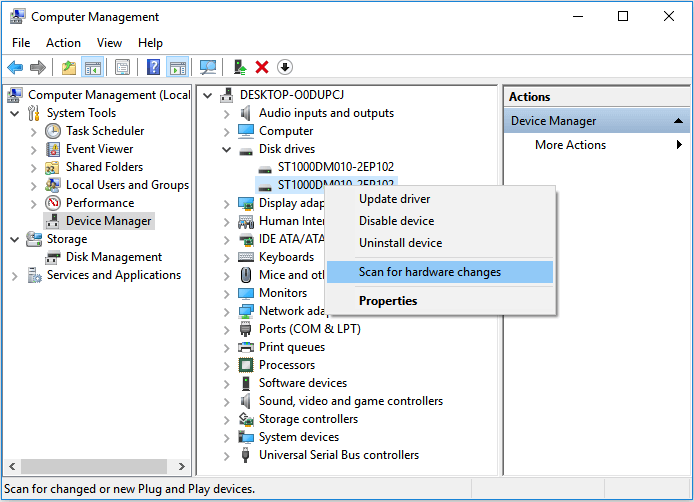
Case 3. USB Is Not Accessible with I/O Device Eror
Symptom: USB cannot be accessed I/O device error, Windows warns "Location is not available. Drive is not accessible. The request could not be performed because of an I/O device error".
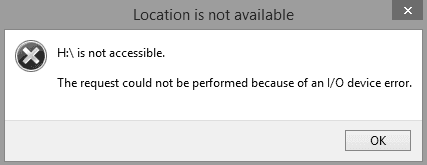
Causes: USB connection error, USB driver issue, unreadable USB drive letter, faulty transfer mode, etc.
Solutions: #1. Change USB Port and Reconnect USB; #2. Update USB drive driver; #3. Chang USB drive letter; #4. Change USB transfer mode.
Follow each fix one by one until your USB turns openable again.
Fix 1. Change USB Port to Open USB in Windows 10
Step 1. Eject USB properly
Move your mouse to the right-hand side of the taskbar of Desktop, right-click USB icon, and select "Eject USB Brand Name".

Step 2. Unplug USB and re-plug it to another USB port on your computer.
Step 3. If you see a pop-up, choose "Open folder to view files".
If you see no pop-up, open the USB in File Explorer and access your files.

Fix 2. Update USB Drive Driver and Reinstall USB Controllers, Make USB Accessible
Step 1. Connect the USB flash drive to PC. Press "Windows key + R" to bring up Run, and type devmgmt.msc and hit Enter.
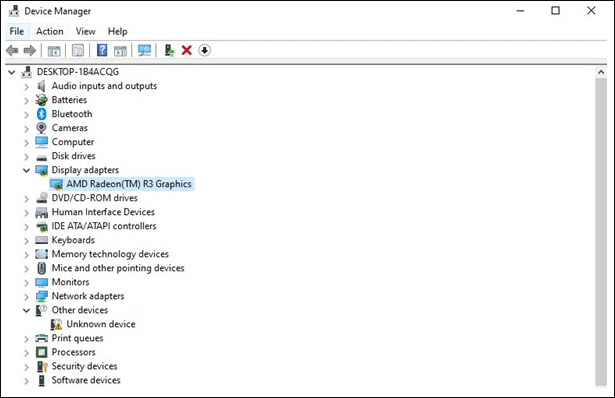
Step 2. Click "Device Manager" then expand "Disk drives". Find and right-click the problematic USB drive and select "Update driver"
Step 3. Click "automatically search for driver software online".
Step 4. Wait for the driver to be updated, then reboot your computer.
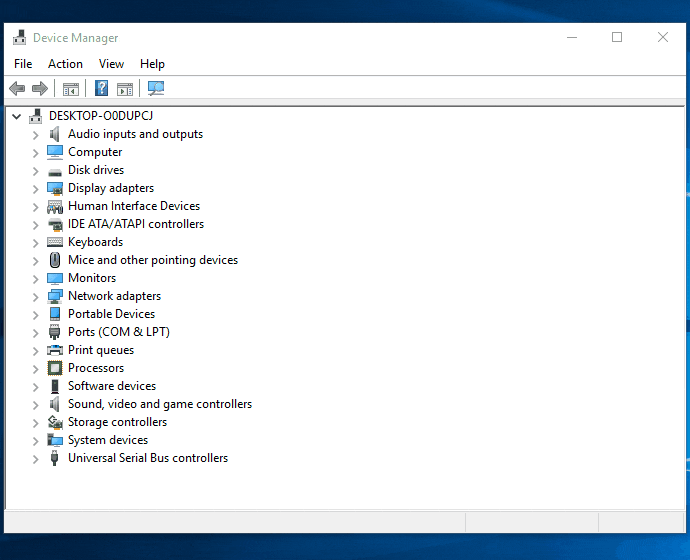
Afterward, you can try to reconnect your USB drive to PC and check whether the USB drive shows up or not.
Step 5. Reopen Device Manager, find and expand "Universal Serial Bus controllers".
Step 6. Under the list, right-click every device and then click "Uninstall" to remove them all at a time.
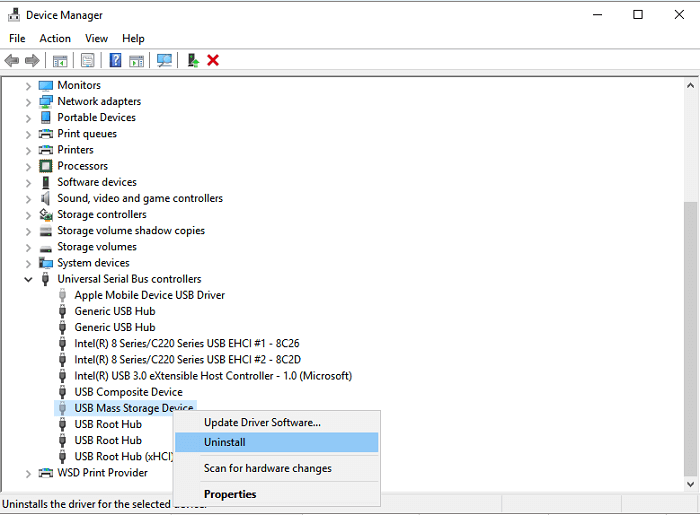
Step 7. Restart the computer, and let the USB controllers get reinstalled.
After finishing all the operations, plug in the removable pen drive/ flash drive or other USB devices to check if it can be opened.
Fix 3. Open the USB Drive by Changing USB Drive Letter in Window 10
USB not showing up in Windows 10 is one of the symptoms of Windows 10 "cannot open USB" issue. Most times, the problem is caused by a drive letter confliction or USB driver issues.
To fix the issue and to open USB on Windows 10 successfully, first try to give the USB a new path.
Step 1. Right-click on "This PC", select "Manage". In the "Storage" menu, click "Disk Management".
Step 2. Here, locate the USB drive, right-click and select "Change Drive Letter and Paths".
Step 3. Click the "Add" button, enter a location the USB drive will be accessible at, such as C:\USB. Your flash drive will now be accessible at the new folder location you specified.

After this, unplug the USB and reconnect it back to your computer. There, you should be able to visit the drive and open all files on USB drive again.
Fix 4. Change USB Transfer Mode
Step 1. Insert your USB to computer, right-click on "My Computer" or "This PC".
Step 2. Click "Manage", enter Device Manager.
Step 3. Expand the IDE ATA/ATAPI controllers, right-click the IDE Channel where the appropriate drive is connected, and select "Properties".
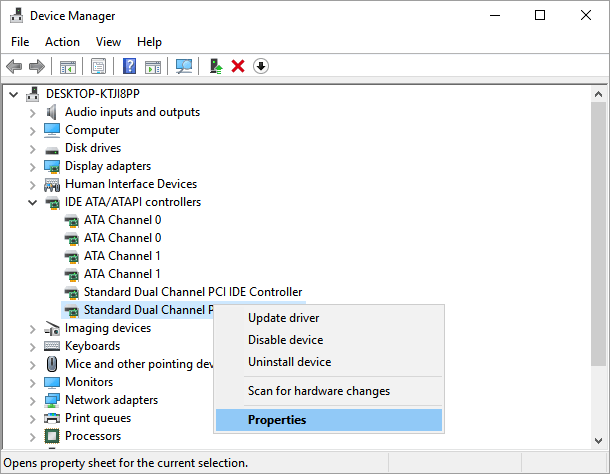
Step 4. In the Transfer Mode box, select "PIO Only", and restart PC.
Case 4. File or Directory Is Corrupted on USB
Symptom: When the file or directory of USB is corrupted and unreadable, it will become inaccessible. Windows will pop up with this warning: "Location is not available. USB is not accessible. The file or directory is corrupted and unreadable".

Causes: USB contains file system error or file system corrupted that makes USB unreadable.
Solution: Run CHKDSK /F /R Command to Fix USB File Directory
Caution: CHKDSK command works to fix this error but it will cause permanent file loss on USB drive. So make sure that you apply EaseUS Data Recovery Wizard to restore all precious data at first.
Sometimes, you ask for a solution to open the USB in Windows 10 when the pen drive not showing data. Most times, it happens when the device is damaged or infected with unknown viruses. In this case, you can try to fix corrupted USB using CMD to regain access to your device.
Step 1. Press "Windows Key + X" button, in the power users menu, select the "Command Prompt (Admin)" option.
Step 2. Click "Yes" when you are presented with a UAC window requesting permission to launch the Command Prompt as Administrator.
Step 3. In the new Command Prompt window, type chkdsk E: /f /r /x and hit "Enter". Here you should replace E with your drive letter.
This command will run chkdsk to check and repair any possible errors, bad sectors or corrupted files on the USB flash drive. When it is finished, exit the command prompt. Safely eject and reconnect the USB flash drive to see if it can be opened.
If command line is not your ideal choice, you can apply this command-line alternative tool - EaseUS CleanGenius. Use this one-click tool to fix the file system error on your hard drive.
Step 1. Download EaseUS CleanGenius on your computer for free.
Step 2. Run the software. Click "Optimization" on the left panel, and then choose "File Showing" .
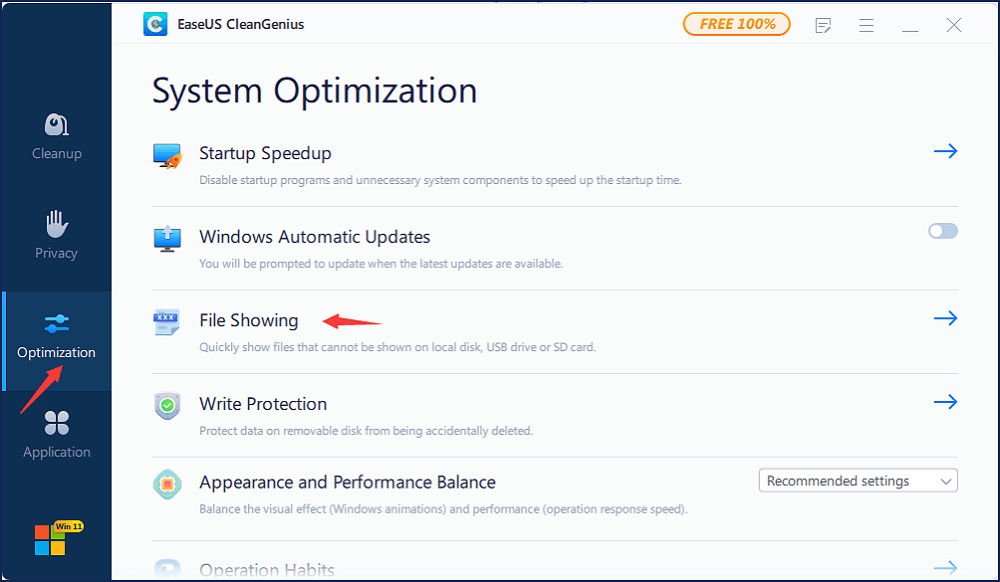
Step 3. Go to "Choose drive" and select the drive with a file system error. Check the "Check and fix file system error" option and click "Execute".
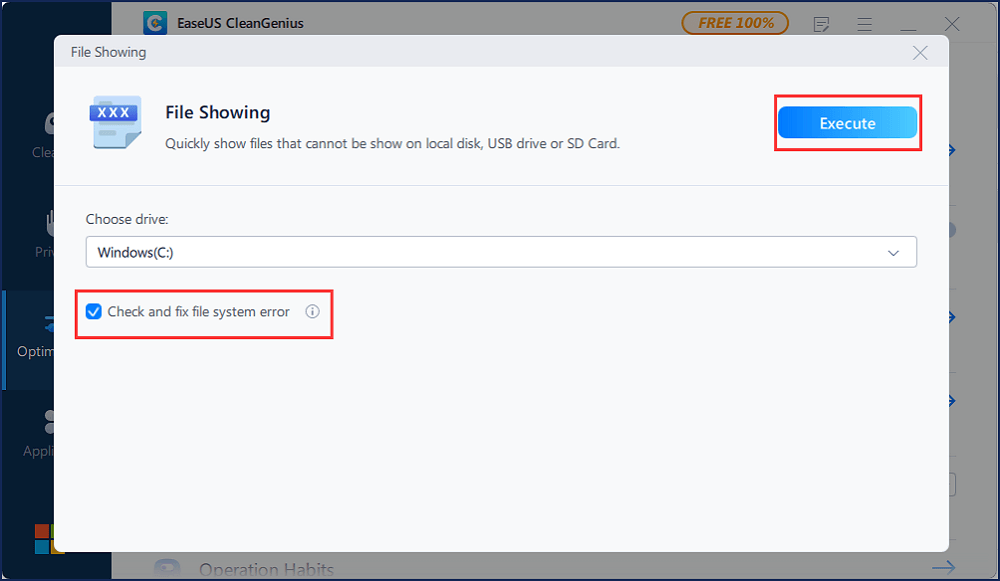
Step 4. Wait the EaseUS CleanGenius completes the repairing process. After that, click the "here" to view the result.
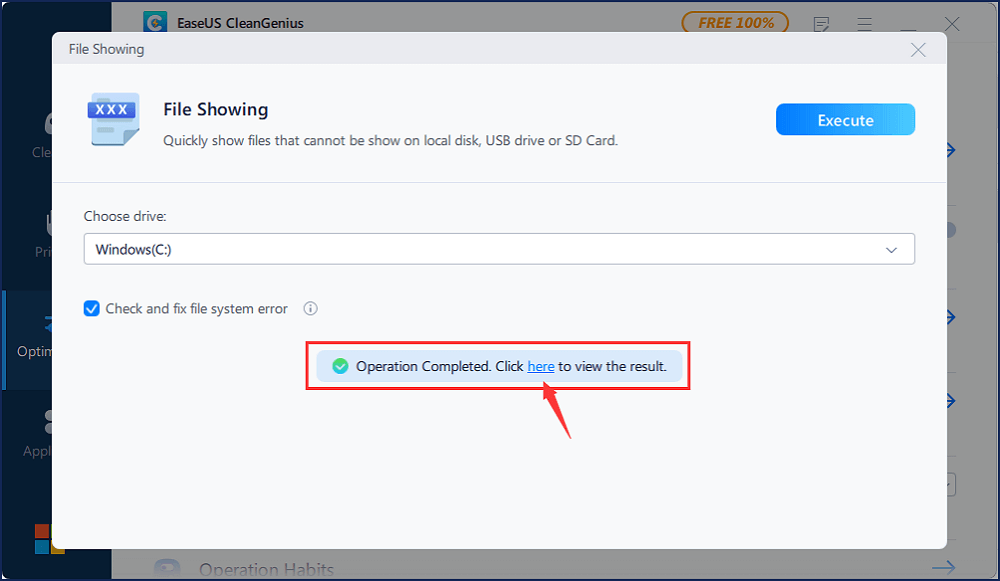
Conclusion
When you can't access a USB drive on Windows 10, 8, or 7, a quick way to fix this issue is to change the USB port and reconnect it to your computer again.
If the USB fails to show up or is still unopenable, you need to run a reliable data recovery software like EaseUS Data Recovery Wizard to scan and restore all USB data at first.
Then check turn to the right solution to make USB accessible again. If it's showing in File Explorer, you can go to Part 1 and follow the right fixes for help. If the USB doesn't show up in File Explorer but detected in Disk Management, try solutions in Part 2.
By going through the listed resolution, your data will be safely restored and the USB will be openable again.
Can Not Access USB Drive Windows 10 FAQs
After learning how to open an inaccessible USB drive on Windows 10, you may have more questions about it. See if you can find your answers here:
1. How to fix the USB drive not showing up in Windows 10?
- Insert the flash drive into your computer's USB port.
- A USB port should be located on your computer's front, rear, or side.
- Depending on how your computer is configured, a dialog box may display.
- If so, choose Open folder to view files.
2. Why can't I access the USB drive?
Below are the commonly occurring 5 reasons:
- The disk driver is outdated
- The USB drive is not partitioned
- There is no drive letter with another partition on the USB.
- The current file system does not work with Windows 10.
- The USB drive is RAW
3. How do I get Windows 11 to read my external hard drive?
To get Windows 11 to recognize your USB drive, attach it to your computer with a USB cord. You may access it once it's attached by navigating to My Computer or This PC and double-clicking on the drive. If Windows 11 isn't reading your USB drive, try using a new USB cable or attaching it to a different USB port on your computer. You can also try reformatting the drive with the built-in Disk Management tool in Windows 11.
4. Why is my USB flash drive not showing up?
The following are the four main reasons why USBs are not recognized:
- The drive is not correctly seated in the port.
- The drive is turned off. This is rare, but some models of USB drives have a physical power switch.
- The computer's USB port is broken.
- The USB drive has been damaged.
Was This Page Helpful?
Cedric Grantham is a senior editor and data recovery specialist of EaseUS. He mainly writes articles and how-to tips about data recovery on PC and Mac. He has handled 10,000+ data recovery cases and is good at data recovery of NTFS, FAT (FAT32 and ExFAT) file systems, and RAID structure reorganization.
Written by Tracy King
Tracy became a member of the EaseUS content team in 2013. Being a technical writer for over 10 years, she is enthusiastic about sharing tips to assist readers in resolving complex issues in disk management, file transfer, PC & Mac performance optimization, etc., like an expert.
-
EaseUS Data Recovery Wizard is a powerful system recovery software, designed to enable you to recover files you’ve deleted accidentally, potentially lost to malware or an entire hard drive partition.
Read More -
EaseUS Data Recovery Wizard is the best we have seen. It's far from perfect, partly because today's advanced disk technology makes data-recovery more difficult than it was with the simpler technology of the past.
Read More -
EaseUS Data Recovery Wizard Pro has a reputation as one of the best data recovery software programs on the market. It comes with a selection of advanced features, including partition recovery, formatted drive restoration, and corrupted file repair.
Read More
Related Articles
-
Steam Deck SSD Upgrade? How to Upgrade the Storage Drive
![author icon]() Jaden/2023/12/05
Jaden/2023/12/05 -
How to Solve Can't Format SD Card on Android Phone, Camera, and Windows PC
![author icon]() Tracy King/2023/11/08
Tracy King/2023/11/08 -
Fix Saved Game Corrupted Error on Xbox 360
![author icon]() Jean/2023/11/08
Jean/2023/11/08 -
How to Fix GoPro SD Card Error and Recover Data from It
![author icon]() Jaden/2023/12/13
Jaden/2023/12/13